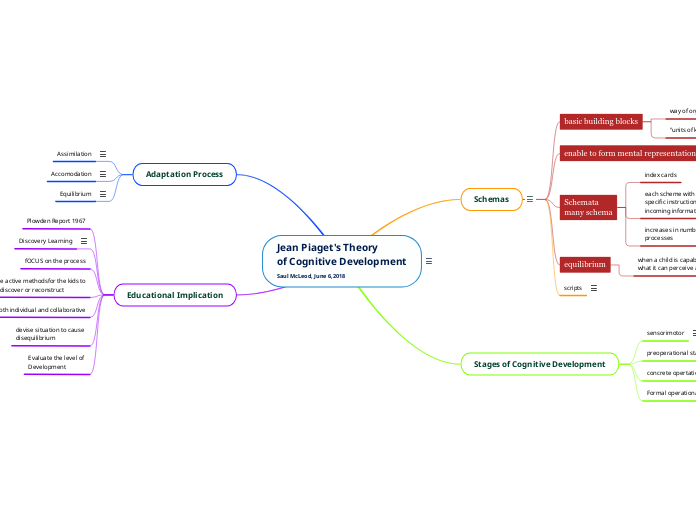Jean Piaget's Theory
of Cognitive Development
Saul McLeod, June 6,2018
Schemas
basic building blocks
way of organizing knwoledge
"units of knowledge
enable to form mental representation
Schemata
many schema
index cards
each scheme with
specific instructions about
incoming information
increases in number is mental
processes
equilibrium
when a child is capable of explaining
what it can perceive around it
scripts
Stages of Cognitive Development
sensorimotor
preoperational stage
concrete opertational stage
Formal operational stage
Adaptation Process
Assimilation
Accomodation
Equilibrium
Educational Implication
Plowden Report 1967
Discovery Learning
fOCUS on the process
use active methodsfor the kids to
rediscover or reconstruct
both individual and collaborative
devise situation to cause
disequilibrium
Evaluate the level of
Development
While it is important to be aware of the different stages of development and the significance of providing information that is appropriate for each level, we must also be aware that there are students who are beyond that stage.
Activating students prior Knowledge
